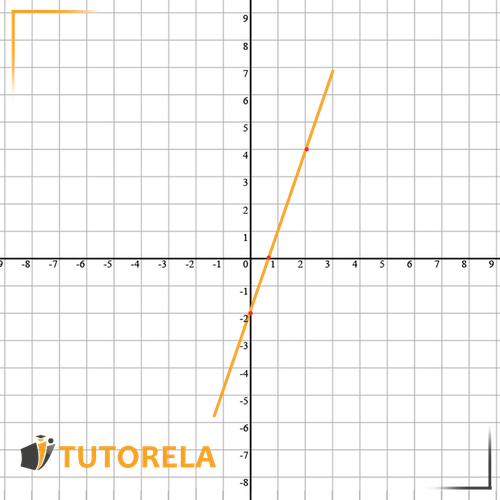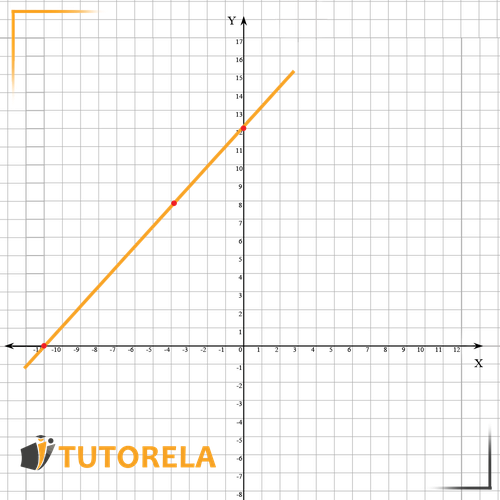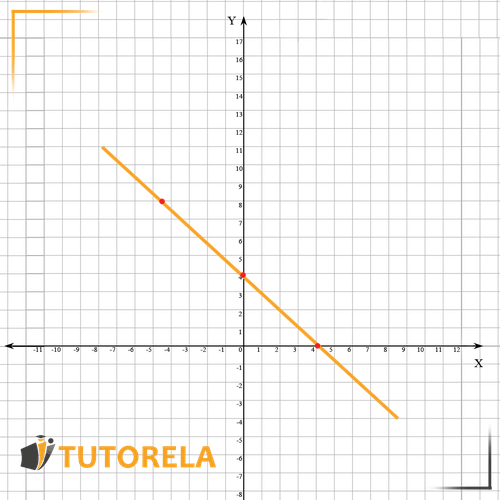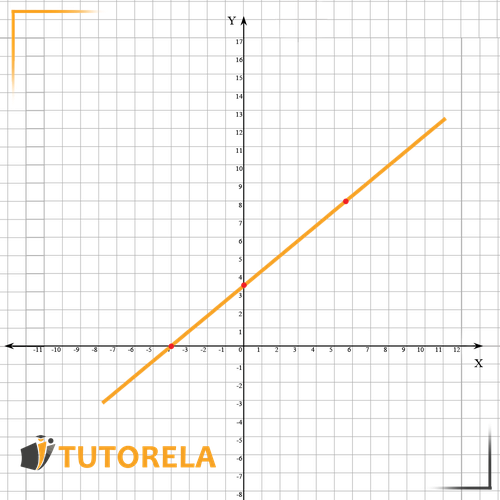Functions can be represented in several ways, each providing a unique perspective on the relationship between inputs and outputs. Here are the primary methods:
Ways to Represent a Function
Ways to represent a function
Algebraic Representation
Representation using an equation of and , such as , showing how the output depends on the input.
Graphical representation
A visual representation on a coordinate plane, like using a graph, plotting on the and axis, where the function's behavior and trends (e.g., linear, quadratic) can be observed.
Tabular representation
A table of values that pairs inputs () with corresponding outputs () for a quick reference of specific points.
Verbal representation
A written explanation describing the relationship between variables, such as “The output is twice the input plus three.” Expressing the relationship between and using words.
Function notation
Test yourself on representations of functions!
Is the given graph a function?
Ways to represent a function
Algebraic representation of a function
Before we talk about algebraic representation, it is important to understand what a function means.
A function describes the relationship between and .
In any function, is the independent variable and is the dependent variable. This means that every time we change , we get a different .
Y depends on and depends on nothing.
Important point: For each there will be only one !
An algebraic representation of a function is essentially the equation of the function.
Let's look at some examples of algebraic representation of a function and analyze them:
In this equation, it is clear that depends on the we substitute into the equation.
If , then
If , then
If , then
In other words, the relationship between and is that will always be less than .
Now let's examine another equation:
Also in this equation, it is clear that depends on the we substitute into the equation.
If , then
If , then
If , then
In this equation, it is difficult to define in words the relationship between and , so we will say that the relationship between them is the equation itself:
Now let's examine another equation:
In this equation, it is also clear that depends on the we substitute into the equation.
If , then
If , then
If , then
The relationship between and is that they are identical each time.
Click here to learn more about the algebraic representation of a function!
Graphical representation of a function
A graphical representation of a function shows us how the function looks on the and axes.
What is most important to know?
For each , there is only one , and to draw a function as a graph, it is advisable to find at least 3 points of the function.
How to draw the function:
Each time, substitute a different into the algebraic representation and identify its . Mark all the points obtained on the drawing and then draw a straight line between them.
For example:
Let's substitute three s and we get:
| 0 | -2 |
| 2 |
Now let's mark the points we obtained on the number line:

Examples of graphical representation of a function:



Important tips:
How do you know if the function is increasing or decreasing?
There are 2 ways:
- According to the coefficient of in the algebraic representation – if the coefficient of is positive, the function increases from left to right. If negative, the function decreases from left to right.
- Mark points of the function (substitute a different each time and find the ) and then draw a straight line passing through them. Look from left to right and decide if the function is increasing or decreasing.
You can read more about the graphical representation of a function at this link!
Is the given graph a function?
Is the given graph a function?
Is the given graph a function?
Tabular representation of a function
A tabular representation is essentially a representation using a table of and showing us the value of for each that we substitute into the function.
Let's see an example:
For the algebraic representation -
we get a tabular representation like this:
Verbal representation of a function
A verbal representation of a function describes the relationship between and using words.
For example:
Each package of flour () makes whole pizzas ()
For more information on verbal and tabular representation of a function, click here!
Is the given graph a function?
Determine whether the given graph is a function?
Does the graph below represent a function?
Function notation
How do we denote a function?
So far, we have denoted a function as
It is also useful to know that a function can be denoted in the following way:
which implies that we will get a value that depends on .
You can read more about function notation here!
Determine whether the following table represents a constant function:
Determine whether the following table represents a function
Determine whether the following table represents a constant function
Examples with solutions for Representations of Functions
Exercise #1
Is the given graph a function?
Video Solution
Step-by-Step Solution
To determine if the graph is a function, we will use the Vertical Line Test.
The Vertical Line Test states that a graph represents a function if and only if no vertical line intersects the graph at more than one point.
Let's apply this test to the given graph, where a horizontal line is drawn. This line represents the function the graph should be verified against.
- Step 1: Conceptualize vertical lines passing through different x-values across the domain of the graph.
- Step 2: Observe if any of these vertical lines intersect the graph at more than one point.
Upon inspection of the graph, we see that every vertical line intersects the graph at exactly one point.
This indicates that for every input (x-value), there is a unique output (y-value), fulfilling the criteria for the definition of a function.
Therefore, according to the Vertical Line Test, the given graph is indeed a function.
The correct choice is: Yes
Answer
Yes
Exercise #2
Is the given graph a function?
Video Solution
Step-by-Step Solution
To determine whether the graph represents a function, we apply the Vertical Line Test. Here are the steps we follow:
- Step 1: Visualize placing a vertical line across various parts of the graph.
- Step 2: Check if the vertical line intersects the graph at more than one point at any given position.
Step 1: On evaluating the given graph carefully, there is a notable presence of a vertical line passing through multiple y-values. Specifically, the vertical line goes from to at .
Step 2: Since this vertical line at intersects the graph at an infinite number of points, it fails the Vertical Line Test.
Therefore, the graph does not represent a function. According to our analysis and the Vertical Line Test, the correct answer is No.
Answer
No
Exercise #3
Is the given graph a function?
Video Solution
Step-by-Step Solution
To determine if the graph in question represents a function, we'll employ the Vertical Line Test. This test helps to ascertain whether each input value from the domain (x-values) is connected to a unique output value (y-values).
- According to the Vertical Line Test, a graph represents a function if no vertical line can intersect the graph at more than one point.
- In the provided diagram, the graph is a straight line.
- Visual inspection shows that any vertical line drawn at any point along the x-axis intersects the line exactly once.
- This indicates that for each x-value, there is a unique corresponding y-value. Therefore, the relationship depicted by the graph meets the criteria for a function.
Thus, the given graph correctly characterizes a function.
Therefore, the solution to the problem is Yes.
Answer
Yes
Exercise #4
Is the given graph a function?
Video Solution
Step-by-Step Solution
To determine if the given graph represents a function, we use the vertical line test: if any vertical line intersects the graph at more than one point, the graph is not a function.
Let's apply this test to the graph:
- Examine different sections of the graph by drawing imaginary vertical lines.
- Look for intersections where more than one point exists on the vertical line.
Upon examining the graph, we observe that there are several vertical lines that intersect the graph at multiple points, particularly in areas with loops or overlapping curves. This indicates that at those -values, there are multiple -values corresponding to them.
Since there exist such vertical lines, according to the vertical line test, the graph does not represent a function.
Thus, the solution to this problem is that the given graph is not a function.
Answer
No
Exercise #5
Is the given graph a function?
Video Solution
Step-by-Step Solution
It is important to remember that a function is an equation that assigns to each element in domain X one and only one element in range Y
Let's note that in the graph:
In other words, there are two values for the same number.
Therefore, the graph is not a function.
Answer
No
More Questions
Representations of Functions
- Inequalities
- Inequalities with Absolute Value
- Algebraic Method
- Factorization: Common factor extraction
- The Extended Distributive Property
- Coordinate System
- Ordered pair
- Graphs
- Reading Graphs
- Value Table
- Discrete graph
- Continuous Graph
- Functions for Seventh Grade
- Increasing and Decreasing Intervals (Functions)
- Increasing functions
- Decreasing function
- Constant Function
- Decreasing Interval of a function
- Increasing Intervals of a function
- Domain of a Function
- Indefinite integral
- Inputing Values into a Function
- Rate of Change of a Function
- Variation of a Function
- Rate of change represented with steps in the graph of the function
- Rate of change of a function represented graphically
- Constant Rate of Change
- Variable Rate of Change
- Rate of Change of a Function Represented by a Table of Values
- Absolute Value Inequalities
- Numerical Value
- Function
- Linear Function
- Graphs of Direct Proportionality Functions
- Slope in the Function y=mx
- The Linear Function y=mx+b
- Finding a Linear Equation
- Positive and Negativity of a Linear Function
- Representation of Phenomena Using Linear Functions










